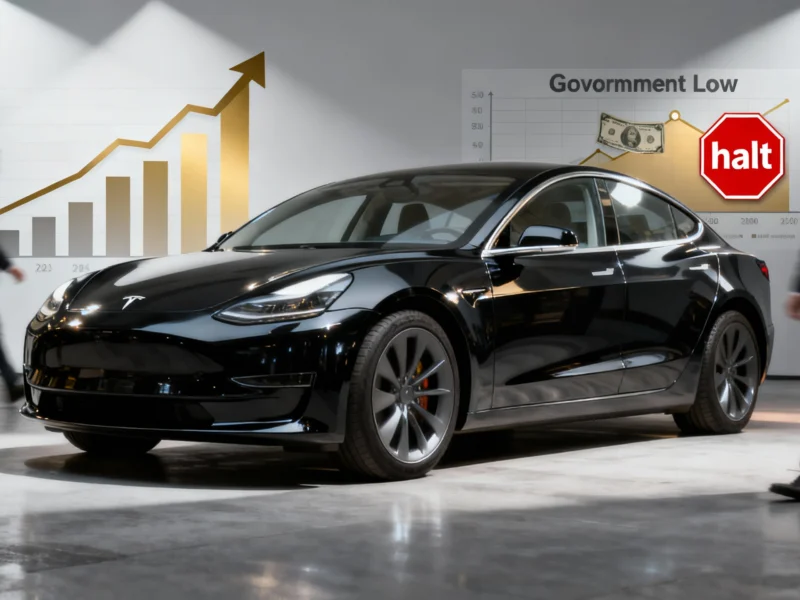Tesla increased lease prices for its Model Y and Model 3 vehicles on Wednesday, immediately following the expiration of federal electric vehicle tax credits. The price adjustments represent the first major consumer-facing response to the elimination of the $7,500 incentive that had made Tesla vehicles more affordable for American buyers.
Immediate Price Impact on Consumers
Tesla’s lease pricing saw significant increases across its most popular models. The Model Y lease jumped from $479-$529 to $529-$599 per month, while Model 3 leases increased from $349-$699 to $429-$759 monthly. These adjustments, first reported by Jalopnik, represent increases of up to 23% for some configurations. The timing directly correlates with the September 30th expiration of the federal EV tax credit program that had provided substantial savings to electric vehicle buyers and lessees.
The price changes come as Tesla faces increasing competition in the EV market. According to CNBC data, Tesla’s market share has declined from over 80% in 2017 to just 38% in August 2025. This erosion occurs despite Tesla maintaining its position as the top-selling EV manufacturer in the United States. The combination of rising prices and reduced government incentives creates new challenges for Tesla’s affordability strategy in an increasingly competitive market.
Political Context Behind Tax Credit Elimination
The EV tax credit expiration resulted from Republican-led legislation known as the “One Big Beautiful Bill,” passed in July 2025. This legislation accelerated the phase-out of incentives originally established under President Biden’s Inflation Reduction Act of 2022, which had scheduled the credits to continue through 2032. The rapid elimination represents a significant policy shift in federal support for electric vehicle adoption.
Elon Musk’s political involvement has drawn scrutiny given Tesla’s historical reliance on government support. A Washington Post analysis calculated that Musk’s companies, including Tesla and SpaceX, have benefited from approximately $38 billion in government contracts, loans, subsidies, and tax credits throughout their development. This context makes Musk’s endorsement of President Trump and subsequent political donations totaling over $270 million particularly noteworthy, especially given the resulting policy changes affecting his own companies.
Financial Implications for Tesla
JPMorgan analysts previously estimated that the loss of EV tax credits would cost Tesla approximately $1.2 billion annually. This substantial financial impact comes as Tesla faces multiple headwinds, including increased competition and brand perception challenges. The immediate price increases suggest Tesla intends to pass some of this cost directly to consumers rather than absorbing the full financial impact.
Tesla’s brand perception has suffered among traditionally supportive demographics. Liberal buyers, who previously constituted a core Tesla customer base, have expressed discomfort with Musk’s political alignment and public statements. The billionaire’s gestures during President Trump’s second inauguration particularly alienated progressive consumers who had been early EV adopters. This political polarization presents additional challenges beyond the direct financial impact of expired incentives.
Market Outlook and Competitive Landscape
The EV market enters a new phase without federal tax credits, potentially altering competitive dynamics. Traditional automakers like Ford, GM, and Hyundai had been leveraging the credits to close the gap with Tesla’s dominance. Without this equalizing factor, Tesla’s price increases could either reinforce its premium positioning or accelerate market share erosion to more affordable competitors.
Tesla’s communication strategy remains unconventional, with the company eliminating its press relations team in 2020. This approach leaves investors and analysts relying on website updates and Musk’s social media posts for official information. The company did not respond to requests for comment regarding the pricing changes, maintaining its pattern of limited external communication.
References:



